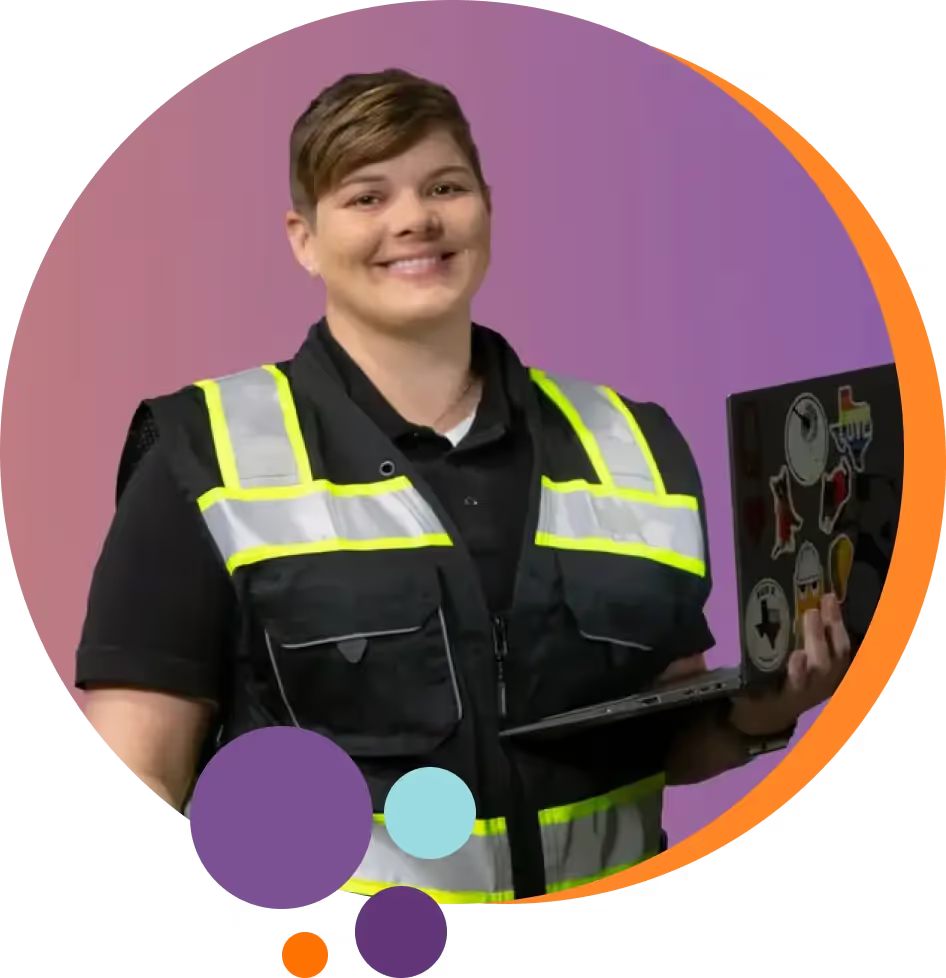If you don't want to get stuck at one community college look into enrolling in a course in Unmudl's coast-to-coast network of leading community colleges. You can earn credits and certifications while being a part of the diverse, job-ready talent that employers are looking for!
Key Takeaways
The answer is yes, it is possible to be enrolled in two community colleges at the same time. This is often referred to as "dual enrollment." While the term dual enrollment typically refers to high school students that are also taking college courses, it can also refer to college students who are enrolled in two schools at once.
Get the Inside Scoop on Booming Technician Careers – Free Webinar!






Get the Inside Scoop on Booming Technician Careers – Free Webinar!






Get the Inside Scoop on Booming Technician Careers – Free Webinar!






Get the Inside Scoop on Booming Technician Careers – Free Webinar!

Get the Inside Scoop on Booming Technician Careers – Free Webinar!






Want to Become an Amazon Maintenance Technician?

Get the Inside Scoop on Booming Technician Careers – Free Webinar!






Get the Inside Scoop on Booming Technician Careers – Free Webinar!






Get the Inside Scoop on Booming Technician Careers – Free Webinar!






Looking to take a class?
Easily enroll in individual community college courses and work towards degrees and certifications
We help people like you find new careers they love!

Dual Enrollment Factors to Consider
Sometimes called “co-enrollment,” dual enrollment in two colleges is entirely possible and completely okay to do. With that being said, it's not for everyone. Before you take the plunge and enroll in two community colleges, you will want to consider all the factors below.
Attending Classes
Dual enrollment attendance can take place in a few different ways:
- All classes taken online from both colleges
- All classes taken in person from both colleges
- In-person classes with one college and online classes with the other college
- A mix of online and in-person courses with each college
If both campuses are in your area, you may choose to take all of your courses in person at the two different schools.
This has the benefit of allowing you to focus on a specific college on any day of the week.
For example, you might attend three classes at College A on Mondays, Wednesdays, and Fridays, while attending two classes at College B on Tuesdays and Thursdays.
This will allow you to more or less block out whatever you have going on at College A on Tuesdays and Thursdays -- something that may be more difficult to do when you take online courses.
Related: Is Community College a Bad Idea?
Subject Grouping
Dividing up your in-person classes at each college on different days can be even more effective if you are able to group your subjects together at each individual college.
It’s not always practical but if you could take both of your literature courses from one college and your science courses from another it becomes even easier to keep track of which courses relate to which college.
(It’s much easier to remember Monday and Wednesdays are my “science days at College A” and Tuesday and Thursdays are my “literature days at College B.”)
This is also a great way to minimize the impact from task switching between subjects, which can take a toll on your productivity.
Be Mindful of Finals
When attending two colleges at the same time, you need to be really careful around finals time because class schedules tend to get pushed around and you obviously want to avoid having final exams scheduled at the same time or too close to each other.
Tip: Many colleges will allow you to arrange a different time to take your exams so be sure to look into those options if needed.
Credit Transfers
Before you enroll in courses at two different colleges, you need to consider your long-term plans. Will you ultimately be transferring to a four-year university? Many institutions place limits on the credits that you can transfer.
Of course, this is something you need to consider even without dual enrollment, but dual enrollment does make the process more difficult.
When you are co-enrolled, you need to cross-check courses at each community college to see which credits you will be able to transfer later on.
Cross-checking would involve looking up the exact courses you plan to take to see if their credits could be transferred to the exact university you plan to attend in the future. This would have to be done for all of your potential courses at both community colleges.
The reason why this is more difficult with dual enrollment is that sometimes colleges number courses differently and that can cause confusion.
For example, a macroeconomics course might be listed as something like “Econ 2301” at College A and “Econ 2302” at College B. Meanwhile the microeconomics course might be listed as “Econ 2302” at College A and “Econ 2301” at College B.
If you weren’t paying close attention you could enroll in “Econ 2301” at College A and “Econ 2302” at College B mistakenly thinking they are offering you different credits when they are actually the same course!
Because you are mixing and matching colleges you likely will not have a college counselor helping you on your course selection which means that it is all on you to make the right decisions.
Related: 10 Benefits of Attending a Local Community College
Dual Enrollment and Financial Aid
When you enroll at two different community colleges, you’ll want to consider the cost. Be aware that financial aid can be complicated with co-enrollment.
Federal financial aid can only be applied to one school. So if you are receiving assistance for one community college, you will have to pay for the other one out of pocket.
It is worth noting that there is an exception to this. If you want to use financial aid towards both schools, you have the option of establishing what is called a “consortium agreement” with the two colleges.
A consortium agreement is an agreement between two educational institutions that allows a student to be enrolled at both schools while receiving financial aid at one of the colleges. The student designates one college as their “home school” and the other as their “host school.”
In a consortium agreement, the student receives financial aid towards their home school. This institution is then allowed to pay government aid towards the credits at both schools the student is enrolled in, as if the credits were entirely at the home school.
This means that you would take most of your credits at your home school and only a few at your host school, amounting to full-time credits. Being a full-time student would then qualify you for federal financial aid.

Dual Enrollment: The Pros and Cons
Pros: Quicker degree path
By doubling up on your college enrollment you may be able to obtain your degree quicker.
Sometimes colleges only offer certain courses during certain times of the year so by pursuing opportunities at a second college you can expedite the timeline to achieve your degree or certification (sometimes even when just taking one class).
Luckily, there are much quicker paths available for various careers these days like those offered by the Unmudl network of accredited community colleges, which produces diverse, job-ready talent for many leading employers such as Netflix, Choice Hotels International, and many others.
Pros: Lifestyle Factors
For many students, the very reason that they decide to enroll in two separate schools is because doing so fits into their lifestyle.
For example, having the ability to take two of your courses in person and three of your courses online makes it easier to get your degree while working or caring for your family.
Pros: The Experience
You get to experience two different schools. If you attend both schools in person, you get to experience the unique attributes of two different campuses.
Every college campus has different clubs and organizations. This means you'll have twice as many options when it comes to extracurricular activities. You'll also get to interact with many students from different backgrounds.
You might even discover that you like your secondary college more than your primary college and decide to switch your full-time enrollment.
Cons: The Potential for Overload
When you’re enrolled in one college, there are restrictions in place that prevent students from overloading on courses. Students that enroll at two colleges have the ability to sign up for the full course load at each school.
While it’s definitely not always advised, many students take advantage of this loophole, but they may find that they have enrolled in more classes than they can handle.
Cons: Keeping Things in Order
When you're taking classes at two different schools, it may get hard to keep things in order. You don't want to get mixed up and turn the wrong assignment into the wrong professor.
Or even worse, you don’t want to erroneously choose a course that ends up not counting towards your degree because there was some confusion when you were cross checking for course transferability.
For many people, attending one school makes it much easier to keep things organized so that they don’t get off track.
Cons: Lack of continuity
Some colleges have professors that teach different courses within the same topics. Also, some community college departments offer similar courses that allow students to seamlessly transition from a “level one” course to a “level two” course.
By attending two colleges you may lose out on the continuity that would otherwise be available if you had stuck with only one school.

Tips for Enrolling in Two Community Colleges at Once
Now that you know the main things to consider, you may be ready to take the plunge and enroll in two community colleges.
Before you do this, take a look at these tips that can help you get started and most of your dual enrollment.
Do Your Research
Do extensive research on campus locations, course availability, course schedules, and student testimonials. As mentioned, pay close attention to how courses are labeled because this will likely differ between institutions.
You will also want to look at all of the logistics of attending both schools. That means looking into drive times if you plan to attend any in-person classes.
Get All of the Appropriate Info and Paperwork Ready
Enrolling in college and applying for financial aid are arduous tasks that require a lot of documentation. Make sure you have all of the necessary paperwork on hand when you are ready to submit your applications.
Tip: Pay close attention to the terms used to describe different documents as colleges sometimes use different names for the same key documents.
Make a Hypothetical Schedule
Before enrolling, map out the schedule you already have and see where you can fit in potential courses.
Take a look at your work schedule and family care schedule, you’ll be able to see what days and times you could fit in on-campus courses or online courses. It will help you to see what dual enrollment would look like in your life.

Assess Your Finances
You won’t always be able to apply financial aid to dual enrollment. There will likely be out-of-pocket tuition costs. Take a look at your finances and make sure that being co-enrolled at two schools is something you can afford.
You may even want to have a school savings specifically set aside in advance so that you know how much money you can dedicate to things like tuition and books.
Related: States that offer free community college
Stay Organized
Dual enrollment can get a little chaotic and unorganized. Once you’re enrolled, invest in some organization tools like planners and calendars.
A planner with split pages is a great way to keep track of your different assignments and due dates between the two schools. Utilizing color in your planner can actually help your brain better process things.
Also, set up a calendar and use different colors for each college to help you keep up with important dates for exams and other key deadlines like when you can drop a class without penalty.
Know Your Limitations
Only sign up for the classes and activities that you can handle. If your schedule feels jam-packed and you find yourself overly stressed, try signing up for one less class the next semester. If you take on more than you can chew, you may sabotage your education.
Bottom Line
Now that you’ve had a chance to dive deep into the details of dual enrollment, you can make the proper decisions for your education.
Enrolling in two community colleges at once is not for everyone. With that being said, if you find that it would meet your unique needs, co-enrollment could have a great impact on your future!





.jpg)

